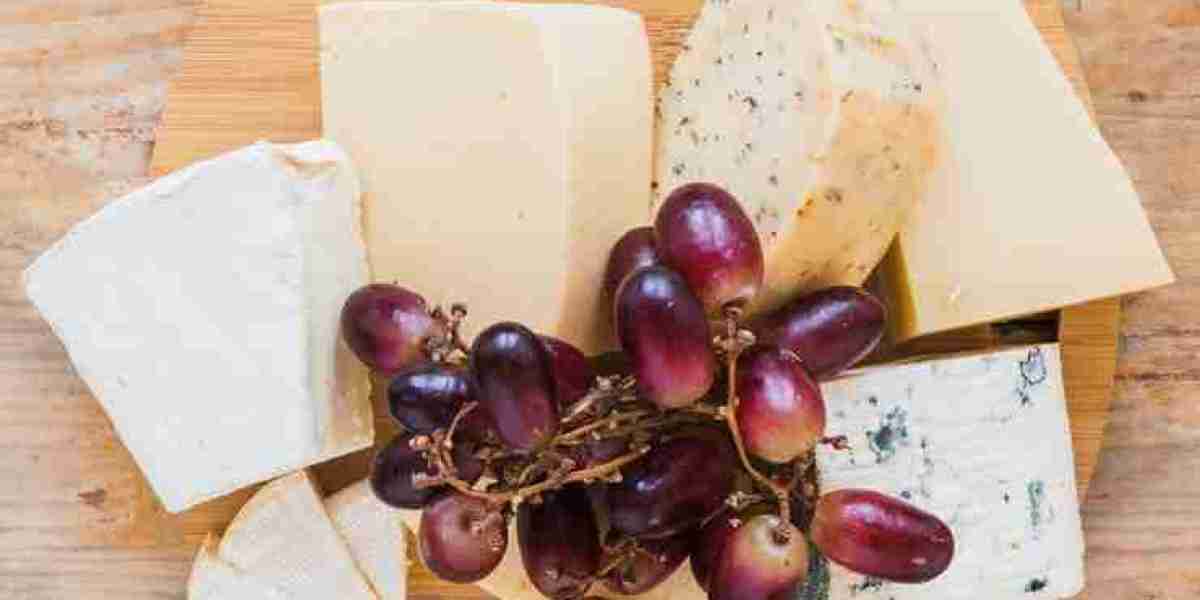The cheese alternatives market has been experiencing significant growth, driven by increasing consumer demand for plant-based, dairy-free, and sustainable food options. However, despite its rapid expansion, the industry faces numerous barriers that prevent it from reaching its full potential. These challenges include high production costs, taste and texture limitations, supply chain constraints, regulatory hurdles, and competition from traditional dairy products. Overcoming these barriers will be crucial for the long-term success of cheese alternatives in the global market.
1. High Production Costs and Price Challenges
One of the biggest barriers in the cheese alternatives market is the high cost of production. Unlike dairy cheese, which benefits from well-established infrastructure and mass production efficiencies, plant-based cheese relies on specialized ingredients and processes.
Key cost factors include:
- The use of high-quality nuts (such as cashews, almonds) and plant-based proteins.
- Advanced fermentation techniques and food science innovations.
- Limited economies of scale compared to the dairy industry.
These costs lead to higher retail prices, making plant-based cheese less affordable for many consumers. As long as price disparities persist, mainstream adoption will remain challenging. Manufacturers need to focus on cost-reduction strategies, including alternative ingredient sourcing and improved production efficiencies.
2. Taste and Texture Limitations
One of the most significant barriers to consumer adoption is the taste and texture of cheese alternatives. Traditional dairy cheese has a complex flavor profile, unique meltability, and stretch that plant-based alternatives struggle to replicate.
Common consumer complaints include:
- Chalky or rubbery textures.
- Artificial or bland flavors.
- Inability to melt and stretch like dairy cheese.
While advancements in food technology have improved plant-based cheese products, many consumers remain unsatisfied. Continued innovation in ingredient formulation and microbial fermentation will be necessary to close the gap between dairy and plant-based cheese.
3. Limited Consumer Awareness and Skepticism
Despite the rise in plant-based eating, many consumers are still unfamiliar with cheese alternatives or hesitant to try them. Common misconceptions include:
- Concerns that plant-based cheese lacks nutritional value.
- Beliefs that cheese alternatives are heavily processed or contain artificial additives.
- Skepticism about taste and performance in recipes.
Educating consumers about the benefits of cheese alternatives—such as lactose-free, cholesterol-free, and environmentally sustainable properties—will be essential in overcoming these barriers. Marketing strategies should focus on transparency, product sampling, and clear labeling to build trust and awareness.
4. Supply Chain and Ingredient Sourcing Issues
The cheese alternatives market relies on various plant-based ingredients, which can be affected by supply chain disruptions. Key challenges include:
- Climate change impacting crop yields of nuts and soy.
- Geopolitical and trade restrictions affecting ingredient imports.
- Rising demand for plant-based ingredients leading to price fluctuations.
For example, cashew-based cheese faces sourcing challenges due to price volatility and ethical concerns in the cashew industry. Similarly, coconut-based cheese depends on imports from tropical regions, making supply chains vulnerable to instability. Diversifying ingredient sources and investing in local production could help mitigate these risks.
5. Regulatory and Labeling Restrictions
Regulations surrounding plant-based products present another barrier to market growth. In many countries, dairy industry lobbying has led to restrictions on using terms like "cheese" for plant-based alternatives. Companies are required to use terms like "cheese-style" or "dairy-free spread," which can confuse consumers.
Additionally, different countries have varying regulations regarding food labeling and nutritional claims, making international expansion challenging for plant-based cheese brands. Streamlining global regulatory compliance and advocating for clearer labeling standards will be crucial for industry growth.
6. Competition from the Dairy Industry
The traditional dairy industry remains a powerful competitor in the cheese market. Dairy cheese benefits from:
- Strong consumer loyalty and brand recognition.
- Government subsidies that lower production costs.
- Widespread availability and established distribution networks.
As plant-based cheese gains traction, dairy companies are responding by introducing lactose-free, organic, and reduced-fat cheese options to retain their customer base. The competition makes it difficult for cheese alternatives to gain a larger share of the market.
7. Nutritional Concerns and Health Perceptions
While many cheese alternatives are marketed as healthier options, some consumers and nutritionists raise concerns about their nutritional profiles. Issues include:
- Lower protein content compared to dairy cheese.
- High levels of saturated fats in coconut-based cheeses.
- The need for fortification with calcium, vitamin B12, and other essential nutrients.
To appeal to health-conscious consumers, brands must focus on improving nutritional value while maintaining clean-label appeal. Highlighting fortifications and natural ingredients can help address health concerns.
8. Short Shelf Life and Storage Challenges
Compared to dairy cheese, many plant-based alternatives have a shorter shelf life due to the absence of traditional dairy-based preservatives. This creates challenges for both retailers and consumers, including:
- Higher risk of spoilage and food waste.
- Stricter refrigeration requirements.
- Limited availability in stores due to concerns about shelf stability.
Innovations in preservation techniques, packaging, and food science will be essential for improving the shelf life of cheese alternatives and making them more accessible.
9. Limited Availability in Retail and Foodservice
Despite growing demand, cheese alternatives are not yet as widely available as traditional dairy cheese. Some barriers to distribution include:
- Limited shelf space in supermarkets.
- Higher costs for restaurants and foodservice providers.
- Difficulty securing partnerships with major retailers and fast-food chains.
Expanding retail presence, partnering with foodservice providers, and investing in direct-to-consumer sales channels can help improve accessibility.
10. Overcoming Barriers for Future Growth
Despite these barriers, the cheese alternatives market has significant potential for expansion. Key strategies for overcoming these challenges include:
- Cost reduction through production efficiencies and alternative ingredient sourcing.
- Taste and texture innovation through fermentation and improved formulations.
- Consumer education to build awareness and trust.
- Stronger supply chain management to ensure stable ingredient sourcing.
- Advocacy for fair labeling regulations to support clearer product marketing.
As sustainability, health-conscious eating, and dietary restrictions continue to drive consumer preferences, addressing these barriers will be crucial for unlocking the full potential of the cheese alternatives market.
Conclusion
The cheese alternatives market faces several barriers, including high costs, taste limitations, regulatory hurdles, and competition from the dairy industry. However, with continued innovation, strategic marketing, and regulatory support, the industry has the potential to overcome these challenges and achieve widespread adoption.


![Nicholas Williams Arthuer - Rising Football Star [Guide]](https://pungi.b-cdn.net/upload/photos/2024/10/QTWYX3fYk1vk9XjrbbNA_03_1fa6d5eedd6b5cc664fda674c39284fe_image.png)
